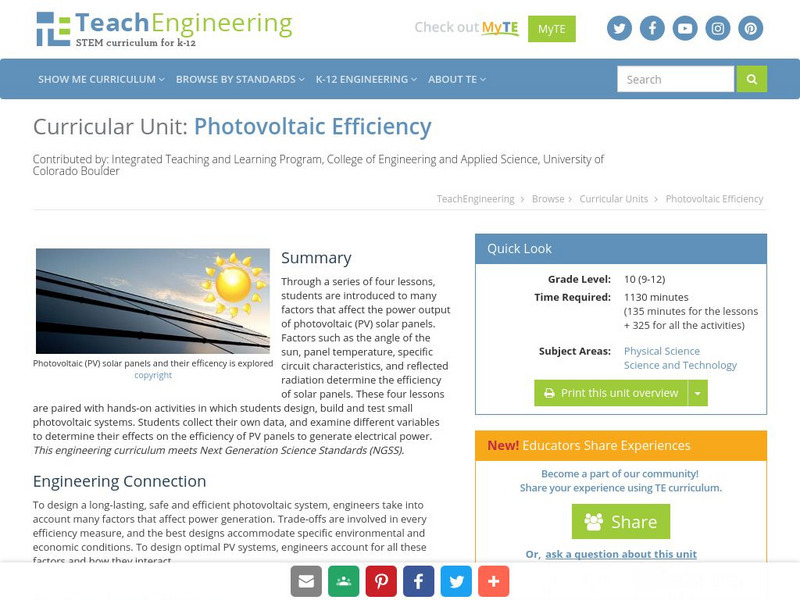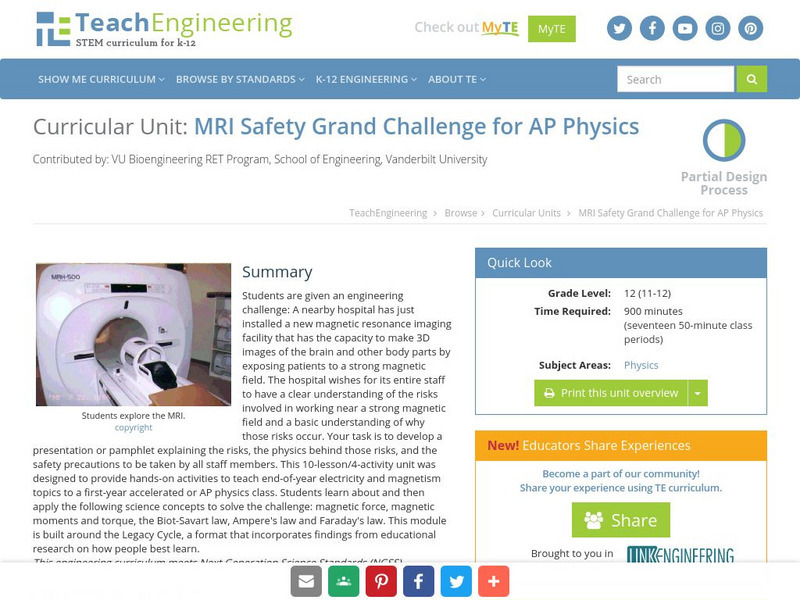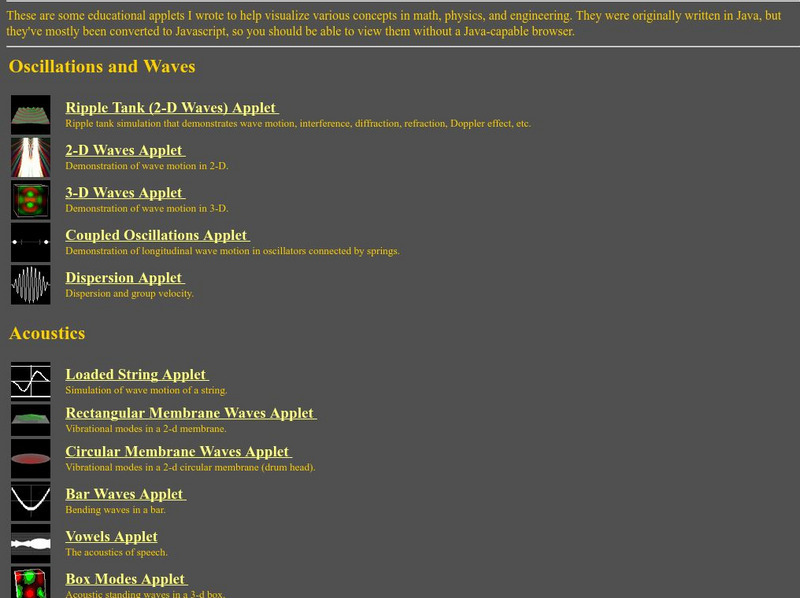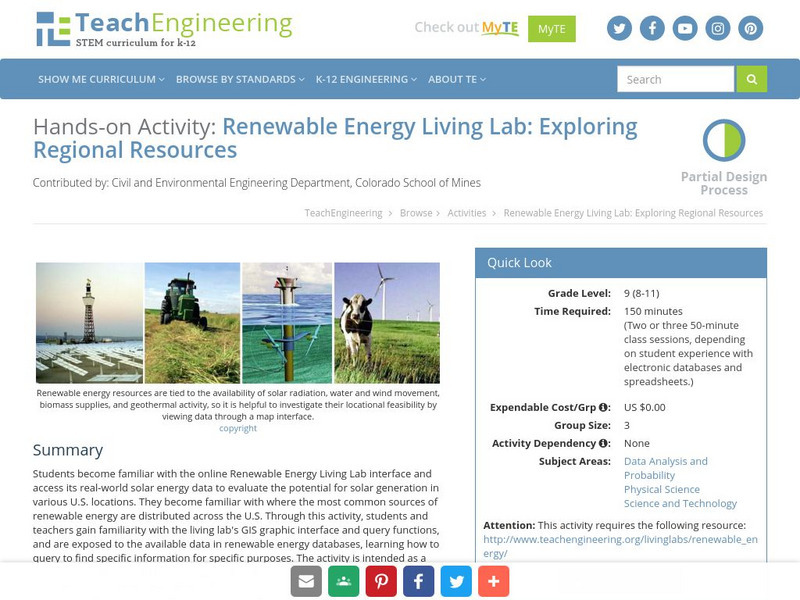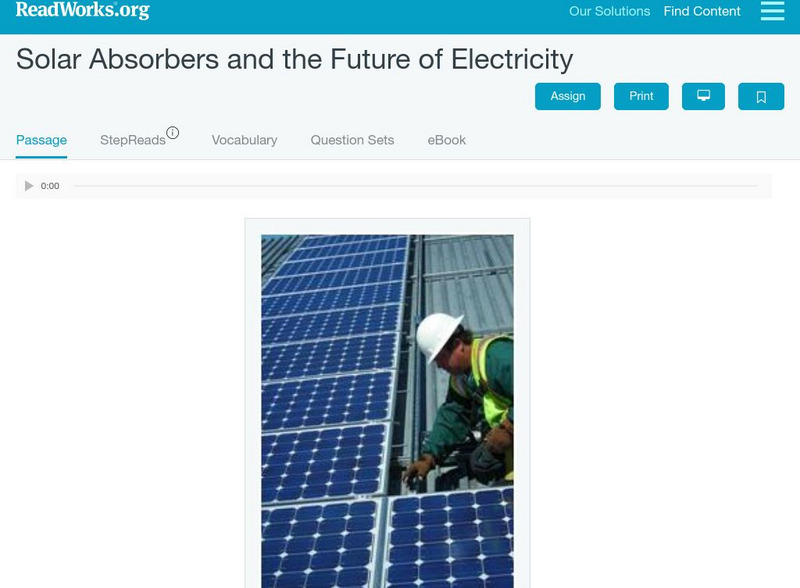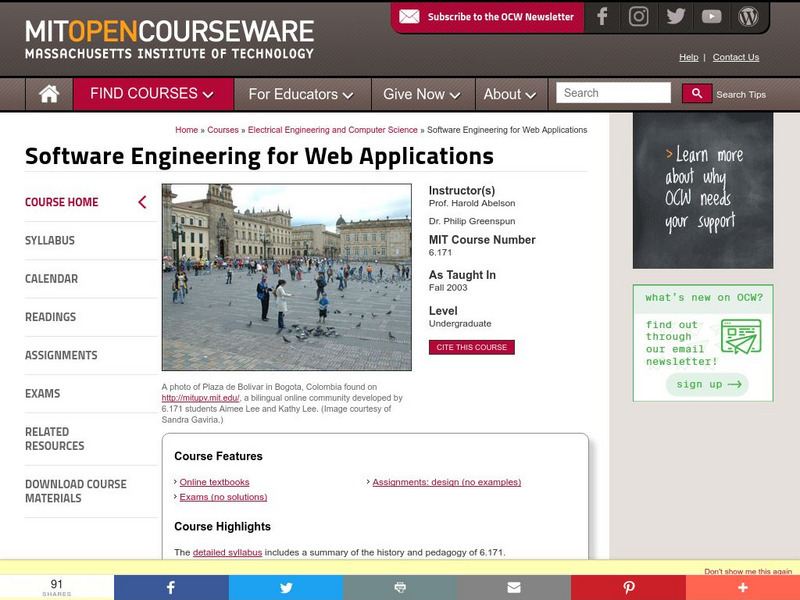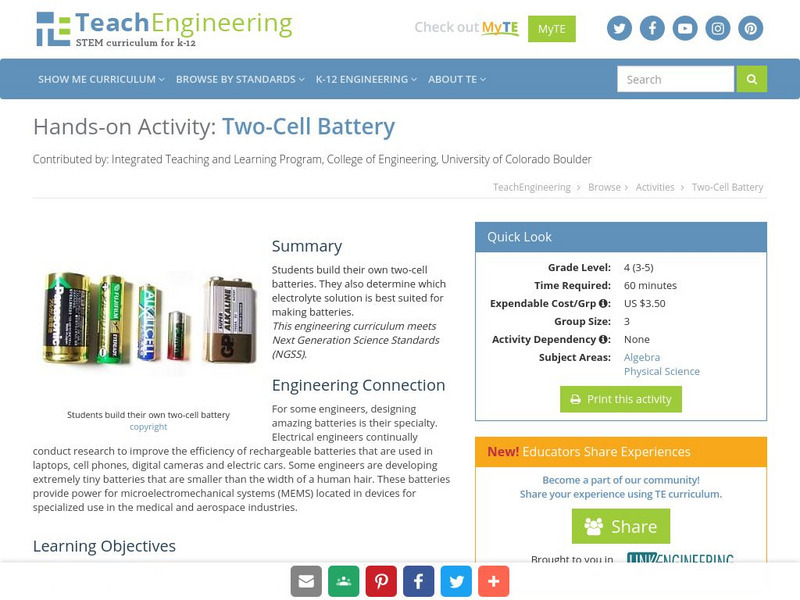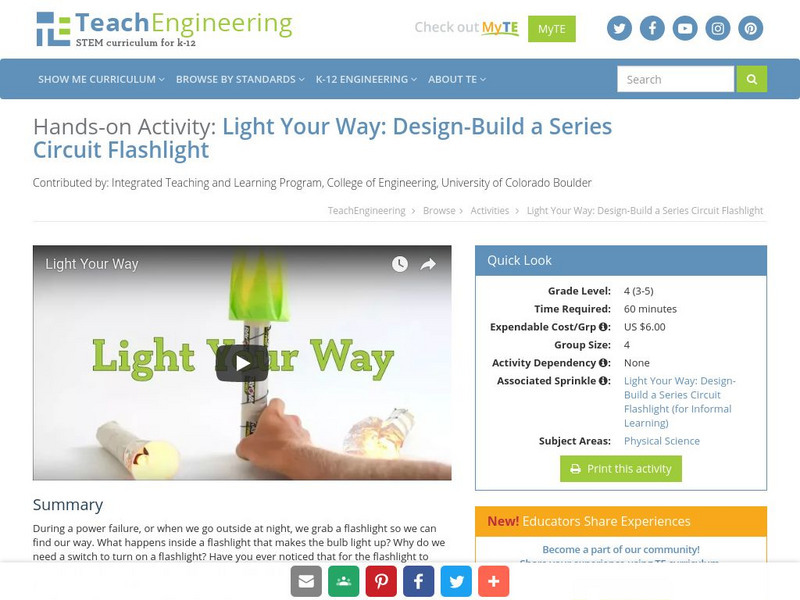Hi, what do you want to do?
TeachEngineering
Teach Engineering: Electrocardiograph Building
This activity will build upon the concepts taught in the lesson The Strongest Pump of All. The activity will pull together the concepts of bioelectricity, electrical circuits, and biology. It will allow the students the opportunity to...
TeachEngineering
Teach Engineering: Photovoltaic Efficiency
Through a series of four lessons, students are introduced to many factors that affect the power output of photovoltaic (PV) solar panels. Factors such as the angle of the sun, temperature of the panels, specific circuit characteristics,...
TeachEngineering
Teach Engineering: Mri Safety Grand Challenge
This module was written for a first year accelerated or AP physics class. It is intended to provide hands on activities to teach end of the year electricity and magnetism topics including the magnetic force, magnetic moments and torque,...
TeachEngineering
Teach Engineering: Drawing Magnetic Fields
Students use a compass and a permanent magnet to trace the magnetic field lines produced by the magnet. By positioning the compass in enough spots around the magnet, the overall magnet field will be evident from the collection of arrows...
TeachEngineering
Teach Engineering: What Is a Motor? How Does a Rotation Sensor Work?
Students learn about electric motors and rotational sensors. They create a basic program using the LEGO MINDSTORMS NXT interface to control a motor to move a small robot.
Texas Instruments
Texas Instruments: Getting Started With Ee* Pro
EE* Pro, by da Vinci Technologies Group, Inc., is an all-inclusive App for electrical engineering students, which helps them study concepts for EE coursework. The App is organized into analysis, equations and references.
National High Magnetic Field Laboratory
Magnet Academy: Claude Shannon
Claude Shannon was a mathematician and electrical engineer whose work underlies modern information theory and helped instigate the digital revolution. He was the first person to recognize how Boolean algebra could be used to great...
Massachusetts Institute of Technology
Mit: Open Course Ware: Introduction to Software Engineering in Java
This MIT course is an introduction to Java programming and software engineering. The focus is on developing high quality software that solves real problems.
Other
Math, Physics and Engineering Applets
Written by Paul Falstad, these educational Java applets address myriad concepts related to electrostatics, magnetostatics and electrodynamics. You'll find instructions on how to operate each applet, but little explanatory material.
TeachEngineering
Teach Engineering: Maximum Power Point
Students learn how to find the maximum power point (MPP) of a photovoltaic (PV) panel in order to optimize its efficiency at creating solar power. They also learn about real-world applications and technologies that use this technique, as...
TeachEngineering
Teach Engineering: Renewable Energy Living Lab: Power Your School
Students use real-world data to calculate the potential for solar and wind energy generation at their school location. After examining maps and analyzing data from the online Renewable Energy Living Lab, they write recommendations as to...
TeachEngineering
Teach Engineering: Renewable Energy Living Lab
Students become familiar with the online Renewable Energy Living Lab interface and access its real-world solar energy data to evaluate the potential for solar generation in various U.S. locations. They become familiar with where the most...
TeachEngineering
Teach Engineering: Concentrating on the Sun With P Vs
Students design, build and test reflectors to measure the effect of solar reflectance on the efficiency of solar PV panels. They use a small PV panel, a multimeter, cardboard and foil to build and test their reflectors in preparation for...
Grammarly
Grammarly Handbook: Institute of Electrical/electronics Engineers
Notes and examples for formatting texts, bibliographies, and citations in the IEEE (Institute of Electrical and Electronics Engineers) Style.
Read Works
Read Works: Solar Absorbers and the Future of Electricity
[Free Registration/Login Required] An informational text about solar panels being used to create electricity. A question sheet is available to help students build skills in reading comprehension.
TryEngineering
Try Engineering: Conveyor Engineering
Young scholars learn about the engineering design process as they design, build, test, and evaluate a conveyor system made with everyday items than can move pieces of candy 4 feet including a 90 degree turn. The objective of the lesson...
National High Magnetic Field Laboratory
Magnet Academy: Steam Condensing Engine 1769
Few inventions have affected human history as much as the steam engine. Without it, there would have been no locomotives, no steamers and no Industrial Revolution.
Robin Chew
Lucid Cafe: Nikola Tesla
Learn here about Nikola Tesla, nventor, electrical engineer, mechanical engineer, physicist, and futurist best known for his contributions to the design of the modern alternating current electricity supply system.
PBS
Pbs Learning Media: Off the Grid
This interactive activity produced for Teachers' Domain presents users with three hypothetical scenarios in which they are challenged to design a wind power system that will meet their electrical needs.
Science Buddies
Science Buddies: Career Profile: Power Distributors and Dispatcher
Science Buddies profiles careers you perhaps never even considered. Do you know what a power distributor and dispatcher does? Someone has to control the flow of electricity along the transmission lines to be sure nothing takes the power...
PBS
Pbs Learning Media: Solar House
In this What's Up in the Environment? video segment, an electrical engineer in Virginia and his 13-year-old son explain how they produce electricity in their home. [3:58]
Massachusetts Institute of Technology
Mit: Open Course Ware: Software Engineering for Web Applications
This course gives students some experience in dealing with the challenges that are unique to web applications, such as concurrency and security risks.
TeachEngineering
Teach Engineering: Two Cell Battery
In this hands-on activity, students build their own two-cell battery. They also determine which electrolyte solution is best suited for making a battery.
TeachEngineering
Teach Engineering: Light Your Way
When there is a power failure, or when we go outside at night, we grab a flashlight so we can find our way. What happens inside a flashlight that makes the bulb light up? Why do we need a switch to turn on a flashlight? Have you ever...






